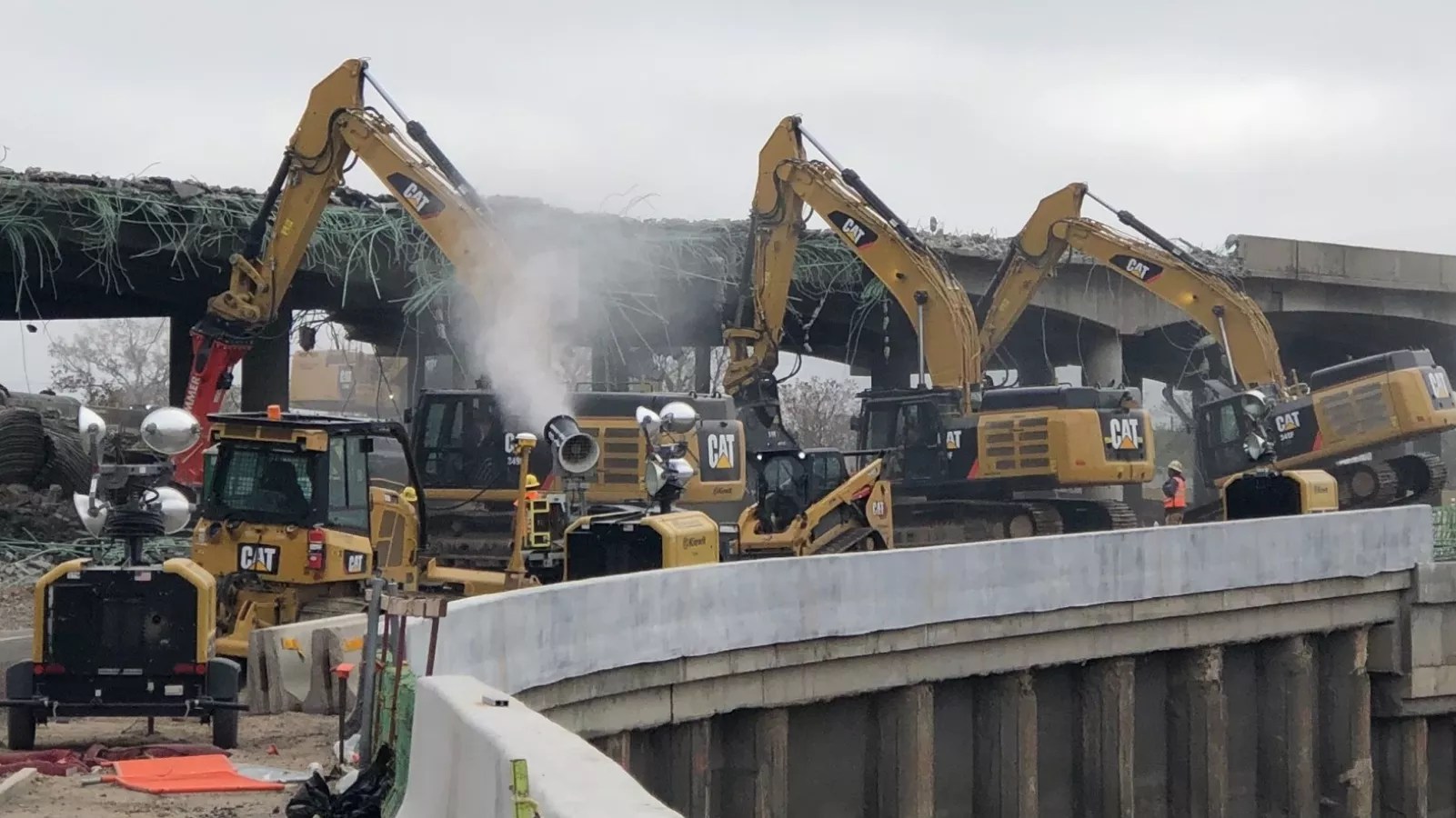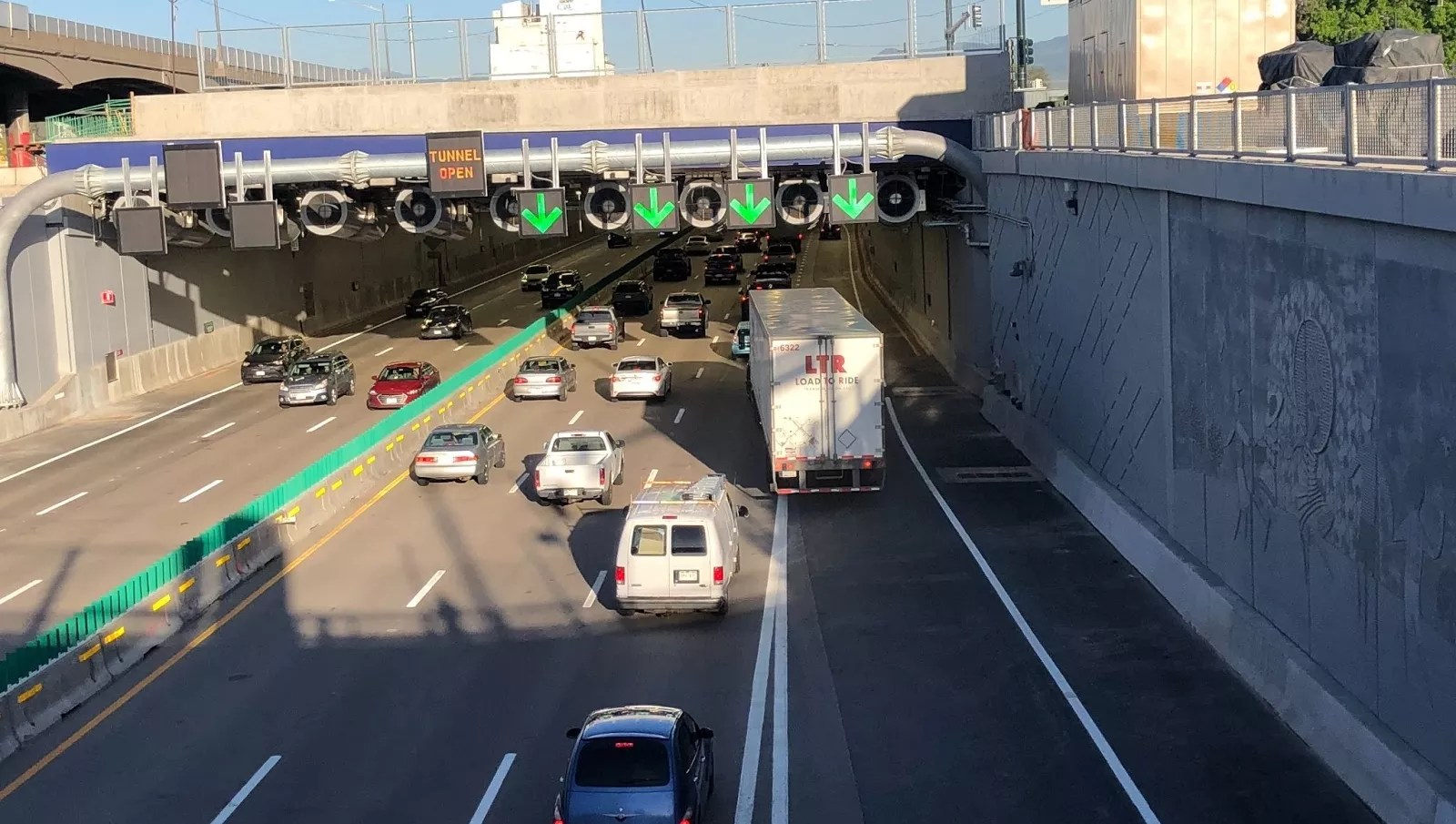

Audio By Carbonatix
Early on May 24, a portion of Interstate 70 that had just undergone what was dubbed the “Mile High Shift” reopened six lanes (three eastbound, three westbound) to travelers after a full weekend closure. Shortly thereafter, traffic slowed to a crawl on either side of a 900-foot section of roadway between Columbine and Clayton streets in which drivers pass under a newly installed cover – an area that doesn’t officially qualify as a tunnel, even though signage uses that very word.
It’s not as if we weren’t warned that this could happen. In a preview of the Mile High Shift, Stacia Sellers, spokesperson for the Colorado Department of Transportation, acknowledged that “with the new lowered lanes, we think there’ll probably be a one-to-two-week learning curve” for drivers that would almost certainly result in more delays and greater congestion over that span, particularly during high-volume periods.
The one-to-two-week estimate seemed incredibly optimistic on May 24. The troubles extended beyond the morning commute and afternoon rush (which was a nightmare, too), as we discovered when we tried out both directions of the route around 2 p.m., a time when traffic is typically free-flowing. But on this first post-shift day, it began clogging up well before the covered area/tunnel.
The culprit was the old I-70 viaduct just to the south of the new lanes. It’s now being demolished, and the sight is absolutely jaw-slackening, resembling a CG-heavy action scene from an Avengers movie, in which battling superheroes casually destroy every structure within hurling range. Moving past it without taking in the startling view is damn near impossible.
The havoc won’t end anytime soon. According to Sellers, the complete demolition of the viaduct “should take us four to five months to accomplish” – a recipe for continued backups throughout the summer.

Traffic moving under the Central 70 cover – don’t call it a tunnel, despite the signage! – on May 24.
Adding to the concerns are other changes to the route, including the following list of ramp realignments that went into effect on May 24:
Westbound I-70
Colorado off-ramp – open
Colorado on-ramp – open
Steele off-ramp – closed permanently
Steele on-ramp – open
York on-ramp – closed permanently
Brighton off-ramp – open
Brighton on-ramp – openEastbound I-70
Brighton off-ramp – open
Brighton on-ramp – open
York off-ramp – closed permanently
Steele off-ramp – closed temporarily
Steele on-ramp – closed permanently
Colorado off-ramp – open
Colorado on-ramp – open
More information can be found on the department’s viaduct web page.
As CDOT describes additional traffic impacts: “The viaduct will be demolished in sections primarily during daytime hours using excavators, crushers and concrete grinders. Depending on the section being demolished, local street closures and some overnight I-70 lane and ramp closures will be required. The demolition will occur over closed roadways with no traffic nor pedestrians moving through the area.”
As for potential environmental issues arising from the viaduct’s demolition, CDOT stresses that “several mitigations will be in place to protect the traveling public, adjacent businesses and the local residents from noise, dust and debris…. To protect adjacent structures, netting and sound curtains will be installed along the property line to protect falling debris from damaging nearby commercial or residential properties. Crews will also be utilizing the Project’s air monitors to measure dust to ensure impacts are within an allowable threshold. Crews will also use personal air monitors to ensure the air quality meets OSHA [Occupational Safety and Health Administration] standards. Water will be used to keep the materials damp to prevent additional dust, and crews will be verifying noise levels remain within allowable limits with noise monitors.”
In the meantime, Sellers encourages drivers to “keep traffic flowing so we’re not creating congestion or having any crashes because of people slamming on their brakes to check things out.”
That’s going to be hard – because what’s happening is absolutely epic.